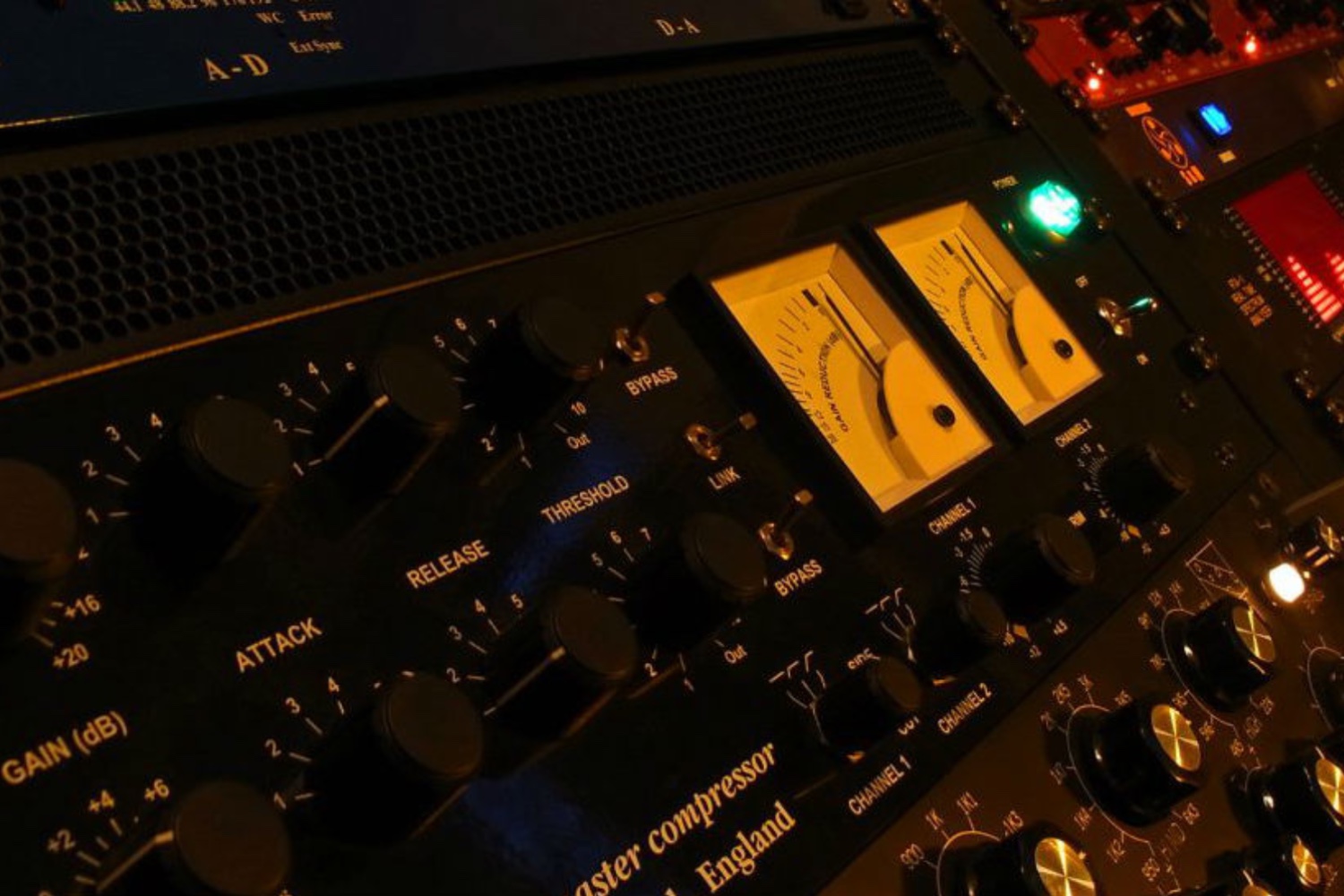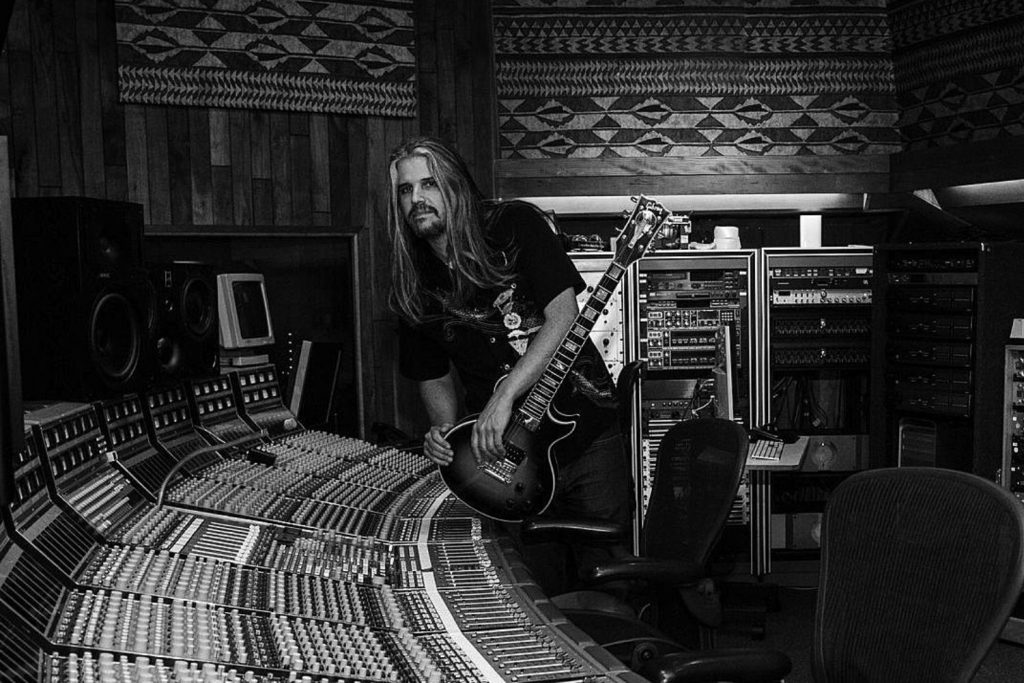We put the best compressors to the test.
We recently embarked on a breakdown of our picks for some of the greatest compressors of all time and needless to say, the results were anything but cookie-cutter.
Featuring obscure lo-fi battlers, cheap Eurotrash and rack units worth more than your car, the first five were all over the place and rightly so. Music is subjective and often calls for lo-fi and trashy just as often as it calls for clean and pristine. One man’s Eurotrash is another man’s Eurotreasure. Anyway…
Now we’re up to the pointy end of things, and it’s all starting to get a bit serious. Who will rule the rack? Who did we miss from Part One? All will be revealed…
Explore more features and gear rundowns here.
5. Empirical Labs Distressor
The enfant terrible of the list, the Empirical Labs Distressor is a departure from a lot of the other names on here, bucking the trend of compressors past and becoming something of a Gen Y mainstay.
Traditionally, the MO for hardware compressors has been to provide maximum gain reduction with minimal colouration on the overall sound, often to varying degrees of success. The Distressor gleefully thumbs its nose at this premise, instead using its cutting edge hybrid digital/analogue design to facilitate a sort of Jekyll and Hyde act on the world of audio processing.
On the one hand, you have an extremely versatile and docile compressor, perfect for reigning in transients and providing steady state volume on sources like bass guitar and snare. But push it even slightly and the Distressor’s real character starts to come to the fore, adding harmonic fire, saturation and overall sonic heft in a way that few compressors can match. Push it further again and all hell breaks loose.
A versatile compressor with an appetite for destruction, the Distressor is already a modern classic, becoming something of a rite-de-passage for aspiring engineers looking to make the jump from prosumer to professional.
Its ability to excite and ignite makes it a perfect option for injecting some life into all kinds of source material, but especially drums, where its penchant for searing harmonic distortion can be just the ticket to draw the kick out of a dense mix.
4. SSL G-Series Bus Compressor
If you had the pleasure/displeasure of catching Deadmau5’s Masterclass on Electronic Music Production you probably heard him utter the immortal line “Using a SSL G Series Compressor on a dance music kick makes no fkin sense…”
Not to discredit Mr. Mau5, but other than the obvious mono/stereo thing, it could very well be worth a shot.
The undisputed king of the stereo bus compressors, the SSL G-Series has been consolidating mixes and bringing a sense of togetherness to proceedings ever since it first emerged as part of the SSL 4000 G Series consoles in the 1980s.
In the time since, it has become something of an industry standard for the drum bus and stereo mix, providing expensive sheen and guttural punch in equal measure, regardless of genre. In 1996, it was even reported that 86% of number one singles in America had been recorded on SSL consoles. It’s fair to assume that every one of these used the bus compressor to some degree.
Sonically, it’s a compressor that has a handy knack for appealing to the reptile part of the brain. Everything that goes into the G-Series comes out sounding bigger, better, tougher. Whether providing additional knock to the main drum bus, lightly tickling the master or providing heavy handed parallel or side-chain reinforcement, the G-series has that kind of Jerry Bruckheimer mojo on lock (which is probably one of the reasons why SSL and the G-Series comp are so ubiquitous in the film industry.)
For Deadmau5, maybe taking a layered EDM kick and running it through one the finest glue compressors ever made could very well be the perfect antidote to an anemic sounding track, who knows? At the very least, there is little doubt that the G-series will be all over that mix bus, that much is a given.
3. Tube-Tech CL1B
I’m not a gambling man, but if I was, I’d put money on the Tube-Tech CL1B eventually claiming the top spot on this list sometime in the future. Since its release in 1991, the blue wonder has continually captured the imagination of commercial studios and bedroom pop maestros alike, firmly etching itself into studio lore and in the process, cementing itself as a bona-fide classic in its relatively short lifespan.
A decidedly modern take on the classic tube/opto compressor, much of the CL1B’s cult like following can be attributed to how easily it has transcended the DAW revolution, with converts often acquiring the hardware unit after having already fallen in love with its plug-in counterpart.
With a modern user interface and an extremely flexible set of onboard parameters (often at odds with its vintage tube circuitry), the CL1B offers heavy, clean compression with few artefacts and just enough harmonic sizzle to hype up everything from snares, to pianos and the human voice, all of which will at the very least, keep the record company happy. The perfect compressor for a generation in the midst of a loudness war.
2. Teletronix LA-2A
A familiar sight in professional studios the world over, the Teletronix LA-2A has consistently topped these kinds of lists for years and for good reason.
For one, it’s probably the most relied upon compressor out there, ideal for shaving off a dB or two on the way in, before seeing heavy action come mix time. Its ability to smooth and refine is legendary in the studio world, making it the dominant vocal compressor in the industry for the better part of 60 years.
Originally released by the Teletronix company in 1965, the LA-2A was the world’s first leveling amplifier (hence the LA in the title), offering extremely musical, pleasant sounding compression at a time when such processing was in its infancy.
While its two knob functionality has for the most part rendered the LA-2A relatively idiot proof, the true beauty of the circuit lies in its variable release and ratio characteristics: properties that seem to change on a dime, depending on how hard the unit is driven.
It’s been the go-to ‘fatten and flatten’ compressor for years, being the default on everything from bass and snare to piano, acoustic guitar or anything else where the battle for expensive sounding audio is fought and won.
Always musical, always classy, the LA-2A is to compressors what the Stratocaster is to guitars – an example of a company hitting it so far out of the ballpark first time around that it remains largely unchanged and unchallenged forevermore.
It’s as functional as it is iconic, and a true giant of the studio world. Were it not for the tweak-happy nature of the modern engineer, the LA-2A would still claim top spot on this list, but alas, we live in uncertain times, rife with bad transients and unsympathetic program material and for that, we need something a bit more nimble.
1. Urei/Universal Audio 1176
You knew it was going to be a two horse race. While we definitely have a soft spot for the classic tones of the LA-2A, there’s little doubt that the FET-based 1176 is the compressor that has made the easiest transition into the modern recording landscape.
With its lightning fast attack, extremely flexible parameters and with an idiosyncratic, head-scratcher of a layout (backwards attack/release pots anyone?) the 1176 is just the right combination of weird and workable.
Designed by the legendary Bill Putnam, the 1176 was an absolute game-changer upon release, introducing the world to the stupid-fast attack properties of the FET (field effect transistor) and forever altering the course in which compressor design would take in the years that followed.
Its bloodline can be traced through the aforementioned DBX 160A and Empirical Labs Distressor (or any other modern compressor that employs FET/Solid-State component to speedy and colourful effect) and through to the world of compressor pedals, plug-ins and beyond.
A real ‘desert island’ piece, the 1176 is that rare bit of studio gear that goes beyond mere signal processing and into the realm of instrument-like musicality. Engineers continually learn new and interesting ways to exploit its eccentricities in the name of artistic expression, passing down presets and tricks in a way not dissimilar to what hip-hop producers have done with the MPC.
From the legendary ‘All Buttons In’, ‘Dr. Pepper’ and ‘British Nuke’ settings to Chris Lord Alge’s parallel distortion sorcery and Andy John’s bombastic pomp, engineers have continually found new ways to get more out of the 1176 than what it says on the box (to the point where knowing your way around one is a legitimate ‘Hard Skill’ in the studio game.)
That’s not to say that it’s a particularly difficult piece of equipment to work with. On the contrary, its versatility and pleasant sonic character make it a relatively easy compressor to pull something workable from, with very little effort required.
However, it’s the underrated ability to continually redefine its appropriateness, regardless of source material that has made it such an omnipresence in the production space. From massive kick drums, to intimate vocal performances and more, the 1176 offers a breadth of application that really sets it apart from its contemporaries, a trait which has paid dividends in the post DAW-era of novice engineers and incredibly diverse program material.
So revered is the 1176 for its brand of sonic voodoo that some well known engineers have admitted to running sources through the 1176 with the unit bypassed ‘just because’. Are there any other compressors that can lay claim to that?
Combine this with the 1176’s exemplary track record for consistently turning up on the biggest records in history and you have our pick for Numero Uno for Mixdown’s Greatest Compressors of All Time.
Need a Part One recap? Check it out here and catch up on our other best-of lists.







